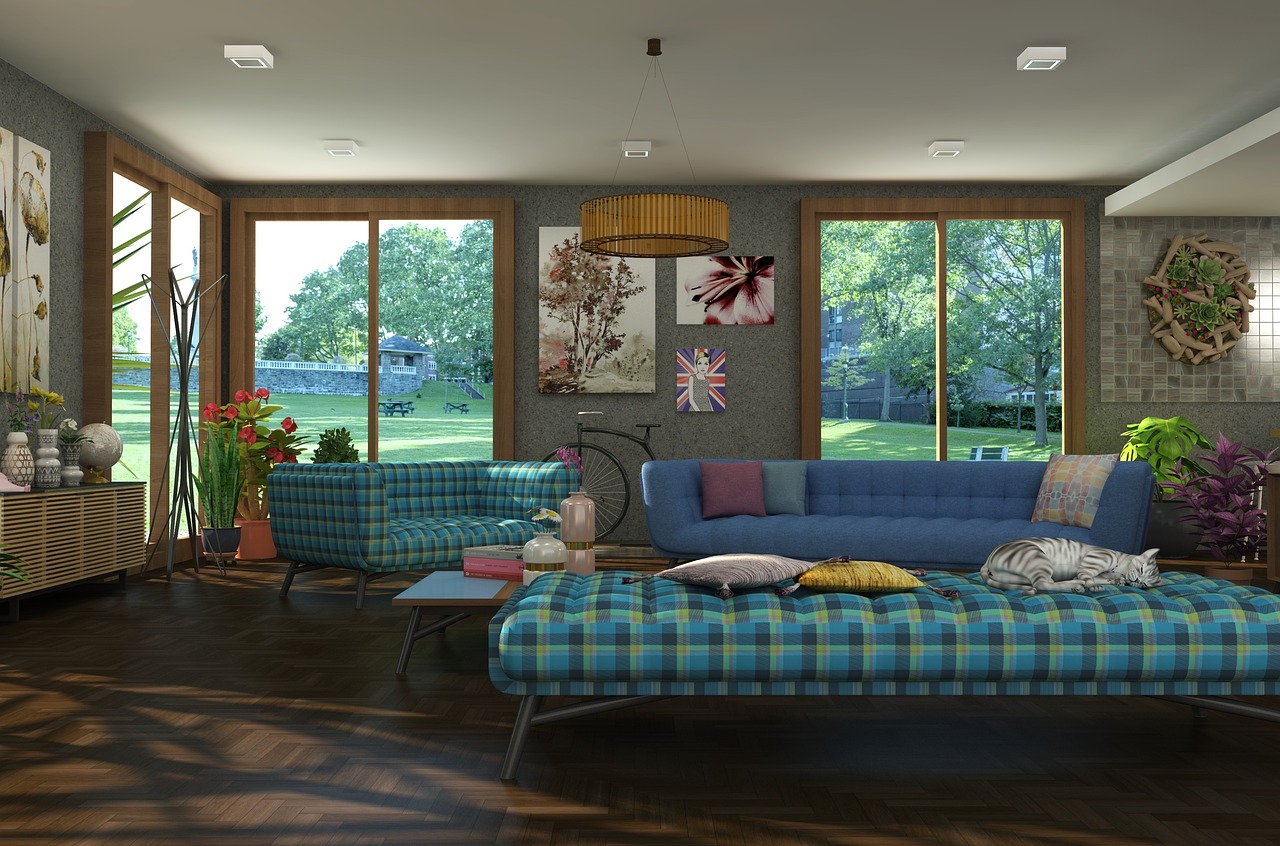Sustainable Living Green Building Design: Energy-Efficient Homes and Eco-Friendly Architecture
Increased energy efficiency in homes not only benefits the environment but also brings significant cost savings to homeowners. By optimizing insulation, using energy-efficient appliances, and incorporating smart technologies, energy bills can be significantly reduced. This not only makes homes more sustainable but also helps in lowering overall operating costs, creating a win-win situation for both the homeowners and the planet.
Moreover, energy-efficient homes often provide a higher level of comfort and improved indoor air quality. Proper insulation and sealing techniques help maintain consistent temperatures throughout the home, reducing the need for constant heating or cooling. Additionally, features like advanced ventilation systems and non-toxic building materials contribute to creating a healthier living environment, which can lead to enhanced well-being for occupants.
Incorporating Passive Solar Design
Passive solar design is a sustainable approach that leverages the sun’s energy to help heat and cool a home. By strategically positioning windows, walls, and floors, homeowners can optimize the absorption of solar heat during winter months while minimizing the exposure to direct sunlight during the summer. This design technique aims to reduce the reliance on artificial heating and cooling systems, resulting in lower energy bills and decreased carbon emissions.
Incorporating passive solar design into a home requires careful planning and consideration of factors such as building orientation, window placement, and thermal mass. By maximizing the natural heat gain and minimizing heat loss, homeowners can create a comfortable and energy-efficient living space. Additionally, passive solar design often complements other sustainable features in a home, such as proper insulation and energy-efficient appliances, further enhancing its overall environmental impact and energy savings.
Choosing Eco-Friendly Materials
Selecting eco-friendly materials for your home is a key decision that can greatly impact the environment. When choosing materials, opt for those that have been sustainably sourced and manufactured using minimal energy and resources. Look for materials that are recyclable, renewable, or biodegradable to reduce the carbon footprint of your home.
Consider using reclaimed or salvaged materials, such as reclaimed wood or recycled glass, to give a new life to items that would otherwise end up in a landfill. These materials not only add character and uniqueness to your home but also contribute to the conservation of natural resources. Prioritize materials that are free from harmful chemicals and toxins to create a healthier indoor environment for you and your family.
Implementing Water Conservation Strategies
To reduce water consumption in homes, installing low-flow fixtures such as faucets, showerheads, and toilets can make a significant impact. These fixtures are designed to deliver the necessary water flow while minimizing wastage, helping to conserve water without sacrificing comfort or convenience. Additionally, fixing leaks promptly can prevent substantial water loss and contribute to overall water conservation efforts within a household.
Utilizing rainwater harvesting systems can also be an effective strategy for water conservation. These systems collect and store rainwater that can be used for irrigation, flushing toilets, and other non-potable water needs. By capturing rainwater, homeowners can reduce their reliance on municipal water sources, minimize water bills, and contribute to a more sustainable water management approach in their residential environment.
Utilizing Renewable Energy Sources
Incorporating renewable energy sources into residential properties has become increasingly popular in the pursuit of reducing carbon footprints and decreasing reliance on non-renewable energy options. Homeowners are now exploring various renewable energy technologies such as solar panels, wind turbines, and geothermal heat pumps to power their homes sustainably. By utilizing these renewable energy sources, households not only contribute to environmental conservation but also have the potential to save on energy costs in the long run.
Solar panels, in particular, have gained traction as a viable option for generating electricity in homes. Through harnessing sunlight and converting it into energy, solar panels offer a clean and renewable energy solution. Additionally, excess energy produced by solar panels can be stored for later use or even sold back to the grid, providing households with a source of income. Incorporating renewable energy sources not only benefits the environment but also offers homeowners the opportunity to take control of their energy consumption and potentially reduce their overall utility expenses.
Maximizing Natural Lighting and Ventilation
Maximizing natural lighting in a home is not only beneficial for reducing the need for artificial lighting but also contributes to creating a bright and inviting living space. Positioning windows strategically to allow ample sunlight to enter the rooms can help improve mood and productivity while reducing energy costs. Additionally, incorporating skylights or light tubes can further enhance natural lighting by bringing in sunlight from above.
When it comes to ventilation, proper airflow is essential for maintaining a healthy indoor environment and preventing moisture buildup. Installing operable windows and utilizing ceiling fans can help promote air circulation throughout the home. This can not only improve air quality but also regulate temperature and reduce the reliance on air conditioning systems. By maximizing both natural lighting and ventilation, homeowners can create a more sustainable and comfortable living space.
Embracing Sustainable Landscaping Practices
Sustainable landscaping practices are key components of eco-friendly homes. Utilizing native plants in landscaping not only minimizes water consumption but also promotes biodiversity within the local ecosystem. By opting for drought-resistant plants, homeowners can reduce the need for irrigation and create a more resilient landscape that thrives in its natural environment.
Another sustainable landscaping practice is incorporating permeable surfaces such as gravel paths or permeable pavers. These surfaces allow rainwater to soak into the ground, replenishing the groundwater supply and reducing stormwater runoff. Additionally, implementing rain gardens and bioswales can help filter pollutants from runoff water, improving water quality in the surrounding area.
Understanding Green Building Certifications
Green building certifications are a way to recognize and promote sustainable building practices. They provide a framework and set of guidelines for ensuring that a building meets certain environmental standards. These certifications can cover a wide range of criteria, such as energy efficiency, water conservation, indoor air quality, and materials selection.
One of the most well-known green building certifications is LEED (Leadership in Energy and Environmental Design). Developed by the U.S. Green Building Council, LEED sets the standard for green building practices and has become a globally recognized certification program. Buildings can achieve different levels of LEED certification based on the number of points they earn through meeting various sustainability criteria.
Enhancing Indoor Air Quality
Poor indoor air quality can have detrimental effects on our health and well-being. Sources of indoor air pollution such as dust, mold, pet dander, and volatile organic compounds (VOCs) from household products can lead to respiratory issues, allergies, and other health problems. To combat this issue, it is essential to implement strategies that aim to reduce and eliminate these pollutants from our living spaces.
One effective way to enhance indoor air quality is to ensure proper ventilation throughout the home. Good ventilation helps to remove stale air and bring in fresh outdoor air, reducing the concentration of indoor air pollutants. Additionally, incorporating air purifiers with HEPA filters can help trap and remove particles from the air, further improving the overall air quality indoors. By prioritizing these strategies, we can create a healthier and more comfortable living environment for ourselves and our families.
Creating a Healthy and Comfortable Living Environment
Creating a healthy and comfortable living environment is essential for promoting well-being and overall quality of life. By ensuring proper ventilation and air circulation within the home, occupants can breathe in fresh, clean air that is free from pollutants and allergens. This leads to improved respiratory health and reduces the risk of developing indoor air-related illnesses.
In addition to focusing on air quality, maintaining a comfortable temperature and humidity level is key to creating a pleasant living space. Proper insulation and energy-efficient heating and cooling systems help regulate indoor climate, ensuring that residents are neither too hot nor too cold. By prioritizing comfort through temperature control, individuals can enjoy a cozy and inviting home environment that promotes relaxation and productivity.
What are the benefits of energy-efficient homes?
Energy-efficient homes can help reduce utility bills, minimize environmental impact, and create a more comfortable living space.
How can passive solar design be incorporated into a home?
Passive solar design involves maximizing natural sunlight and heat gain in the winter, while minimizing excess heat in the summer through proper orientation and window placement.
What are some eco-friendly materials that can be used in home construction?
Eco-friendly materials include bamboo flooring, recycled glass countertops, and low-VOC paints.
What are some water conservation strategies that can be implemented in a home?
Water conservation strategies include installing low-flow fixtures, collecting rainwater for irrigation, and fixing leaks promptly.
How can renewable energy sources be utilized in a home?
Renewable energy sources such as solar panels and wind turbines can be used to generate electricity and reduce reliance on fossil fuels.
How can natural lighting and ventilation be maximized in a home?
Natural lighting and ventilation can be maximized by strategically placing windows, skylights, and operable vents to allow for ample sunlight and fresh air circulation.
What are some sustainable landscaping practices that can be embraced?
Sustainable landscaping practices include xeriscaping, planting native species, and using permeable materials to reduce water usage and runoff.
What are green building certifications and why are they important?
Green building certifications such as LEED and ENERGY STAR demonstrate a home’s commitment to sustainability, energy efficiency, and environmental responsibility.
How can indoor air quality be enhanced in a home?
Indoor air quality can be enhanced by using non-toxic building materials, proper ventilation systems, and regular maintenance of HVAC systems.
How can I create a healthy and comfortable living environment in my home?
By incorporating energy-efficient features, eco-friendly materials, water conservation strategies, renewable energy sources, natural lighting and ventilation, sustainable landscaping practices, green building certifications, and maintaining indoor air quality, you can create a healthy and comfortable living environment for you and your family.







